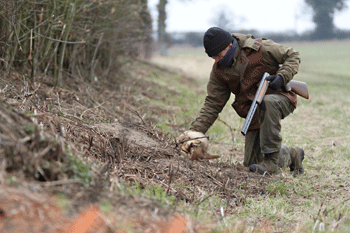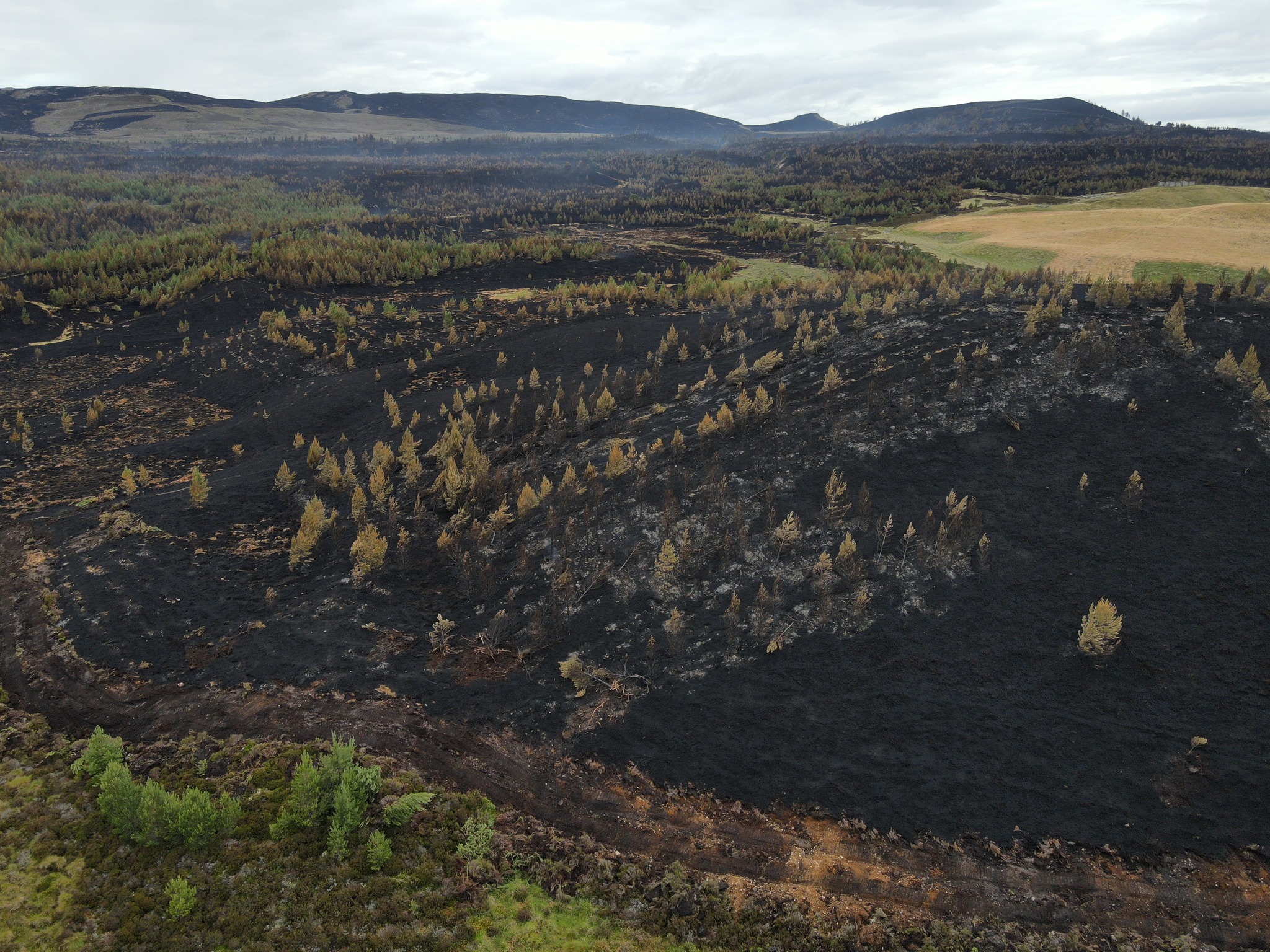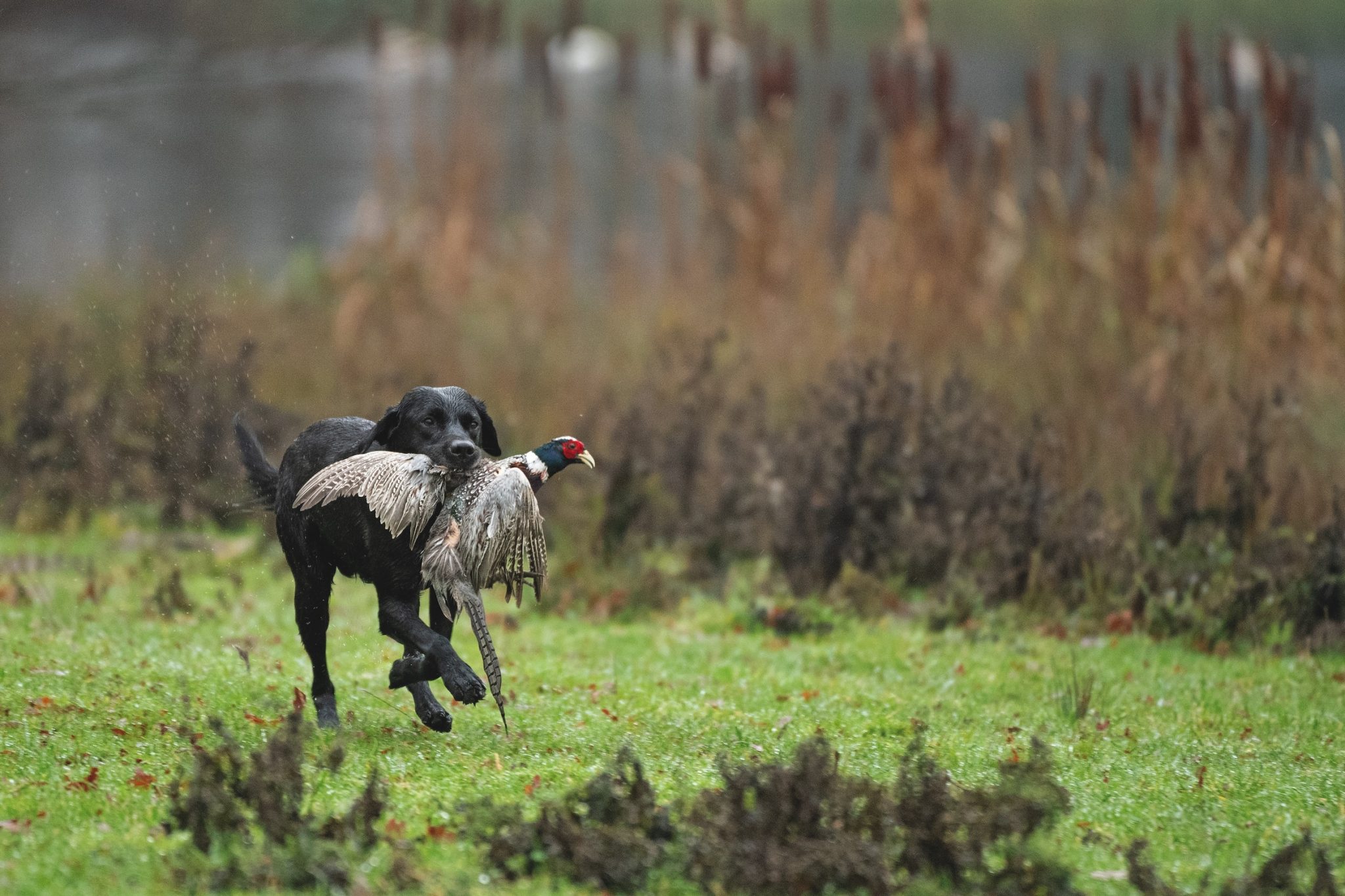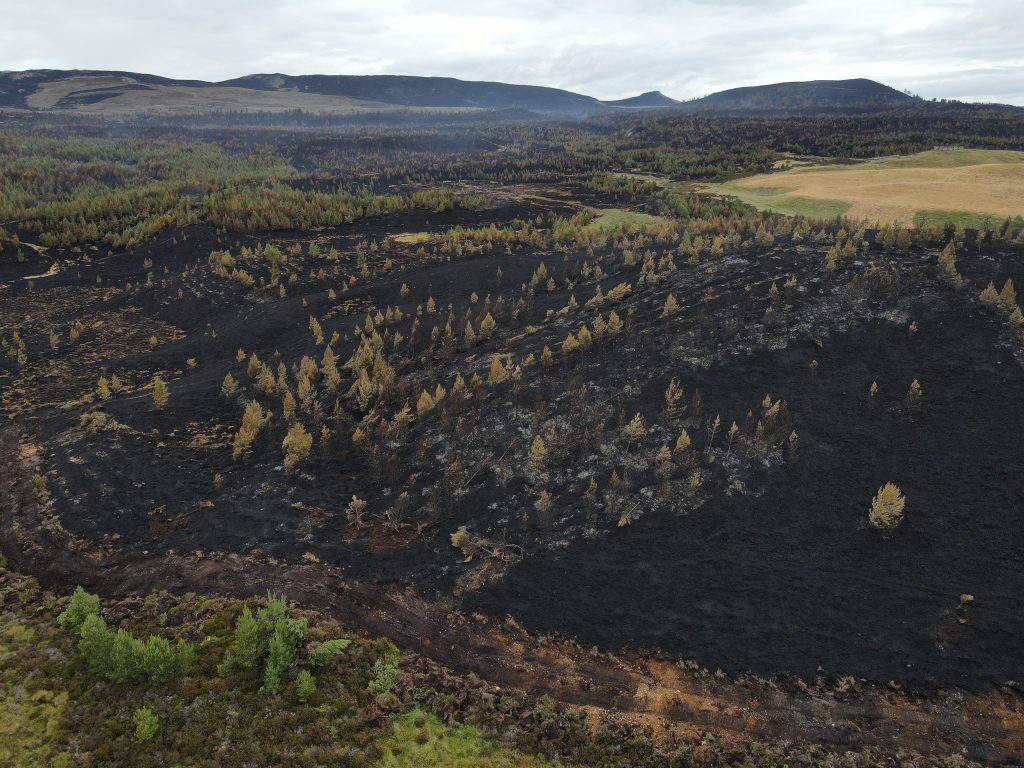- News
- Gundogs
- Shooting
- Recipes
- Gear
-
-
- Industry Jobs
- Get involved
- More
-
-
More
-
-
News
Record wildfire prompts Scottish U-turn on muirburn licensing
By Hollis Butler (Group News Editor)
-
-
Win CENS ProFlex DX5 earplugs worth £1,149 – enter here
Rabbit control: Both barrels for bunnies
<strong>Shooting over ferrets to control rabbits</strong>

Easter can be a strange time of year, especially for rabbits. Statistically, it is more likely to snow at Easter than at Christmas, and this prolonged wintry weather is the last thing that hormonal rabbits need if they are to make up for lost time — and lost relatives — by re-populating. It is also a hectic time of year for me, so if I was to make a dent in the rabbit population before the foliage got too high, a change of tactics was in order.
Dogs and nets were to be superseded by shotguns and 32g No.6 cartridges for this particular pest control session in Norfolk. What I needed to do was to cover as much ground as possible, while being prepared to encounter adolescent rabbits that, annoyingly, can skip through a net and still have time to backfill the holes. Backfilling not only offers some resistance to any rabbits wanting to move into the warren in future but, more importantly, helps local gamekeepers — removing this potential shelter for stoats and weasels improves the keepers’ trapping regime, as the stone tunnel traps they position by every gateway and hedge end will now work more efficiently. This can only be good news for the native grey partridges looking to nest among these hedgerows.
For many sportsmen, shooting over ferrets can be as frustrating as it is fantastic fun, but the shooter must concentrate at all times. Nothing gets the blood pumping and the adrenalin flowing more than the sight of bolting rabbits — especially after a lull in the action — and this means there is the potential for things to go horrendously wrong. With this always in mind, there are only a few people whom I invite to shoot over me and my ferrets, and one of them is Roger Benton. Now in his 68th year, Roger has seen most things, but is still as keen as ever to train and work his golden retrievers as he is to shoot. “Show me the rabbits, Simon”, he implored.
Dressed to kill
The Norfolk landscape offered little resistance to the biting easterly wind that was ensuring temperatures well below 0°C, but our focus had to remain on the job in hand and not on our numb fingers or shivering frames, so we made sure to wear plenty of layers. Nowadays I care little for what I look like just as long as I’m warm and functional.
We would be bolting rabbits in the presence of an assortment of nature, including English partridges, Chinese water deer, an abundance of hares and shelduck, which look to nest in the rabbit holes.
We started the day on a warren under a bankside hedge that was not particularly thick, but had the ability to hide Roger’s position at a glance. As I would be working my ferrets as well as shooting, I took charge of deciding where we could safely stand and shoot, because I would potentially have to move in order to pick up my ferrets or to dig at any moment. I needed to be confident in the ability of my fellow shooter not to become impatient to take a potentially unsafe shot just because a rabbit hadn’t bolted for some time. With Roger I had no such concerns, as he knows the score. The ferrets cared little for what methods we were using, as they hunted with their usual vigour, scurrying effortlessly through hundreds of yards of hedgerow warrens, oblivious to the two Guns standing above ground as the wind whipped over the fields.
I was working mainly white jill ferrets, which are reluctant to stay for a long time when they encounter a nest or youngsters. When shooting, I don’t like to work too many ferrets, as I don’t want the added distraction of lots of them scenting above ground, potentially causing confusion. I instinctively knew that as soon as I put my gun down to pick up a ferret or a rabbit, another would bolt and escape, and this was the case early on. But I had a little surprise for the escapee.
Backfilling the holes is immediately effective, because if you miss the shot, or if a few rabbits bolt at the same time, they cannot simply dart back underground to where they came from. This presents us with a second chance of a shot. Some may say that shooting rabbits trying to get back underground isn’t very sporting, but I am there to do a job, so no quarter is given. If I were a sporting shooter, I would wait until the rabbit was well away from the warren before pulling the trigger, but this would result in many escaped rabbits, as the trees and hedging offer a protective barrier for them to hide behind. However, we don’t shoot the rabbits directly in front of the entrance/exit holes, as this could result in a dead or injured rabbit being forced down the hole for the ferret to meet, causing a potential lay-up, or worse, a frightened or injured ferret poking its head out of the hole at the wrong moment.
A systematic approach
As we systematically worked the hedgerows, we found warrens holding pairs and trios of rabbits (two does and a single buck) — a sign of the breeding season. Once each warren was emptied, we filled in the holes and then moved on to the next, pausing only for hot tea and some lovely lemon sponge cake. The ferrets worked the deep warrens intensely, and provided Roger and me with some testing crossing shots and a few retrieves for his dog, Trixie.
Some of the ferrets scented a stash of rabbits on the wind from quite a distance, finding them among the plough, but I allowed them to rove and interfered as little as possible, as I didn’t want to have to keep emptying and placing my gun on such fine sandy ground.
The day finished sheltered among a small copse surrounded by some breached rabbit fencing. A scattering of holes earmarked the presence of a fair few troublesome rabbits, and the ringed trees provided an example of the damage they can cause in severe weather if not kept in check. By the end we were quite a bit warmer than we were when we started, and a few carriers full of rabbits kept the farmer happy.
Bolting rabbits for the gun is a fine way of covering ground, and though it isn’t my favourite method, I can see the advantages of doing so, as I am governed by my results. From the farmer’s perspective, he just wanted the rabbits gone, so I was confident he’d be pleased with the job we’d done.
Related Articles
Get the latest news delivered direct to your door
Subscribe to Shooting Times & Country
Discover the ultimate companion for field sports enthusiasts with Shooting Times & Country Magazine, the UK’s leading weekly publication that has been at the forefront of shooting culture since 1882. Subscribers gain access to expert tips, comprehensive gear reviews, seasonal advice and a vibrant community of like-minded shooters.
Save on shop price when you subscribe with weekly issues featuring in-depth articles on gundog training, exclusive member offers and access to the digital back issue library. A Shooting Times & Country subscription is more than a magazine, don’t just read about the countryside; immerse yourself in its most authoritative and engaging publication.







